
PP 100029283 FEBRUARY 2023 ISSUE 3 This magazine is FREE for industry professionals www.agedhealth.com.au/subscribe IMPROVING WHAT TO EXPECT FROM REFORMS TECHNOLOGY-ENABLED HOME CARE QUALITY DEMENTIA CARE FOOD STANDARDS


FROM THE EDITOR
Welcome to Aged Health’s first issue of the year.
After facing myriad challenges, changes and reforms throughout 2022, the aged care sector is set for more transformation and transition this year. The rising cost of providing care, the complex regulatory environment, worker shortages and funding issues continue to put pressure on providers across the country.
Around 70% of residential homes were running at a loss in Q3 2022 and the sector will need a capital investment of $48 billion by 2030 to provide enough places for our aging population, according to a recent update by not-for-profit industry body Catholic Health Australia (CHA). In its pre-Budget submission, CHA suggested that wealthier Australians should contribute more for their aged care to make sure providers can remain open and the sector can survive to provide for those who can least afford it.
In this issue’s lead article, Aged Care Lawyer and Principal of Russell Kennedy Rohan Harris highlights what to expect from aged care reforms and how they will impact providers, staff and the sector in general.

As the industry prepares for the road ahead and works towards improving care outcomes for older Australians, we’re seeing new projects and models of care being planned and delivered in different parts of the country. We feature one such project in this issue — TLC Healthcare’s new multigenerational healthcare precinct, which encompasses a 147-place aged care home, an early learning centre and integrated health services.
This issue also features insightful articles on a variety of topics including improving food standards, dementia care, tech-enabled home care, horticulture therapy and more.
Enjoy!
CONTRIBUTORS
Mansi Gandhi Editor ah@wfmedia.com.au
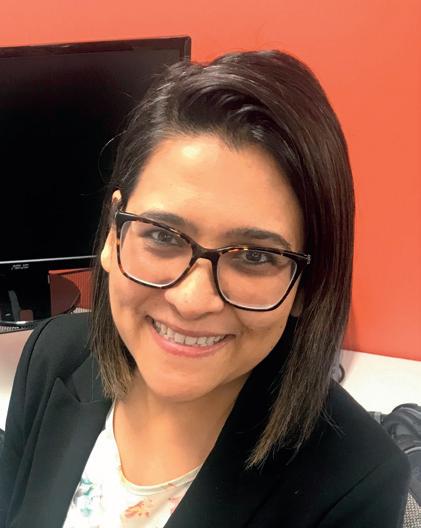 Brett Englart Living Support Manager St Vincent’s Care Carseldine
Michael Ivanchenko CEO CVCheck
Brett Englart Living Support Manager St Vincent’s Care Carseldine
Michael Ivanchenko CEO CVCheck
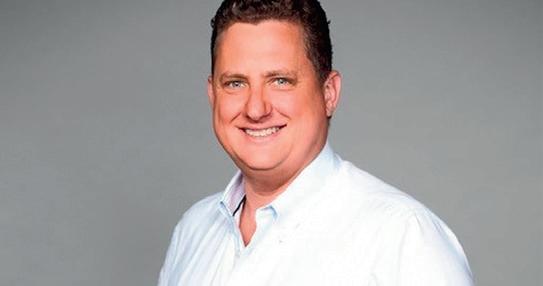 Amy Sarcevic Contributing Editor Hospital + Healthcare
Amy Sarcevic Contributing Editor Hospital + Healthcare

FEBRUARY 2023 - AGED HEALTH 3 www.agedhealth.com.au

4 AGED HEALTH - FEBRUARY 2023 www.agedhealth.com.au CONTENTS 6 What to expect from the latest reforms 12 There’s no place like home 18 Improving dementia care 22 Mobility device supports at-home healthcare workers 28 Improving food standards: 10 points to consider 32 Defying Ageism 34 Service matches volunteers with research projects 37 Technology-enabled home care Regulars 16 Design Matters — The future is integrated and collaborative 20 Design Matters — A new chapter for Calvary's $154m aged care precinct 40 A Day in the Life of... Brett Englart SUBSCRIBE FOR FREE NEWSLETTERS MAGAZINE agedhealth.com.au/subscribe cover image: iStock.com/Goodboy Picture Company iStock.com/JLcoAna Suanes

















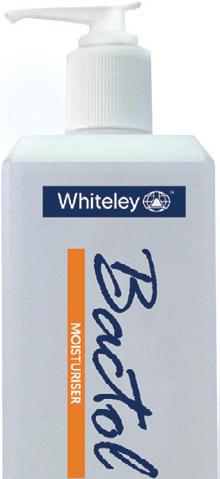



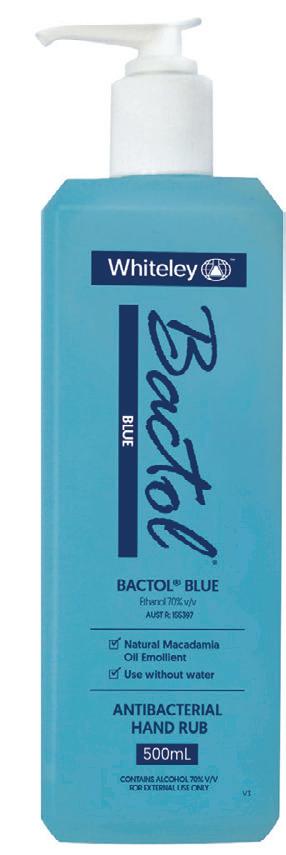



WHAT TO EXPECT FROM THE LATEST REFORMS






6 AGED HEALTH - FEBRUARY 2023 www.agedhealth.com.au AMY SARCEVIC
iStock.com/SeventyFour
The Australian aged care sector is set to look radically different over the next two years as the Albanese government rolls out the nine key reforms it cemented following the Royal Commission into Aged Care Quality and Safety.





FEBRUARY 2023 - AGED HEALTH 7 www.agedhealth.com.au
As providers grapple with the newly introduced star rating system and the impending requirement for a 24-hour registered nurse presence, many are wondering how the upcoming changes will further impact their working conditions.
Aged Care Lawyer and Principal of Russell Kennedy Rohan Harris said the forthcoming requirements around board composition and minimum weekly care minutes could cause headaches and predicts a range of knock-on effects for the sector.
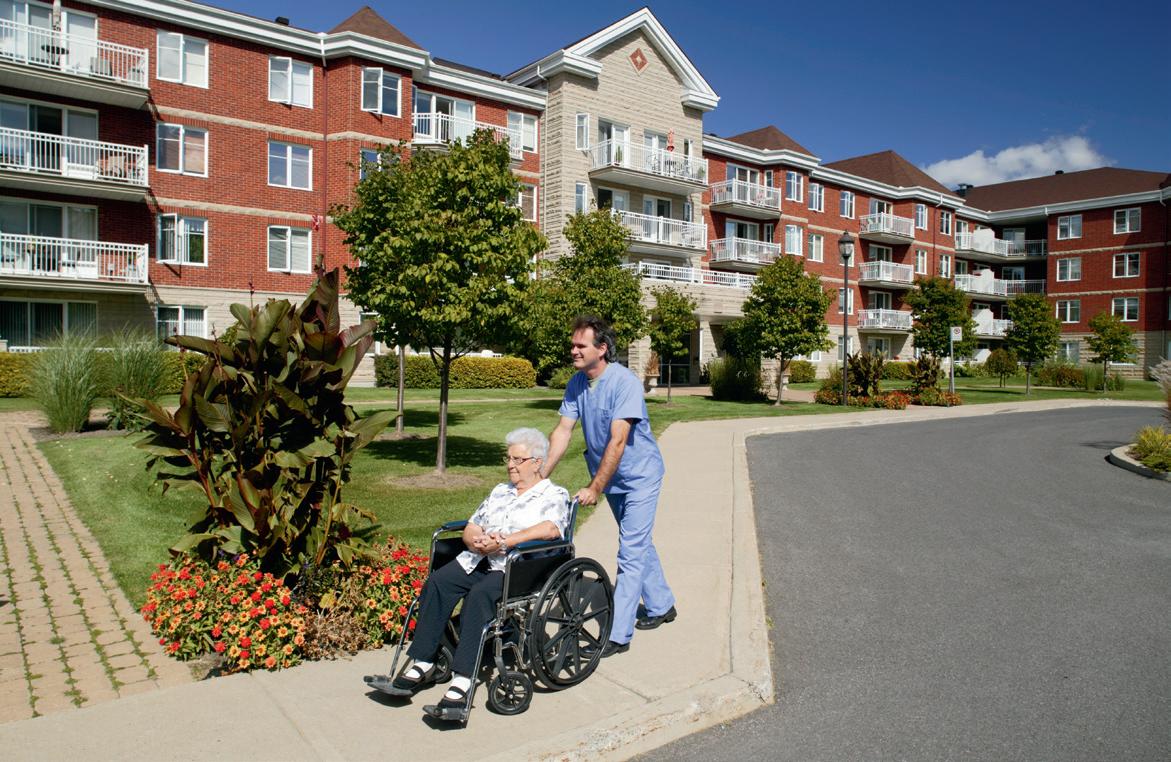
RESOURCE-DRIVEN CHALLENGES
On the first of December 2023, boards of existing approved providers will need a majority of independent, non-executive directors; and at least one of the board members must have clinical experience.
Harris said the independence requirement could particularly challenge smaller private owners/investors, many of whom are used to having total control of their business.
“Many providers are concerned this will have implications for the financial performance of their business. My short answer is: ‘Yes it could, but mainly if your focus until now has been primarily commercial’.
“That is the whole point. It’s a measure designed to prevent the ratification of decisions that could be at odds with resident or staff wellbeing,” he said.
For not-for-profit organisations, the requirement could bring similar challenges, Harris said.
“My experience tells me that board membership is increasingly a professional position and not something that can be done on a purely benevolent or voluntary basis,” he said.
However, according to Harris the criteria by which board members are deemed ‘independent’ is currently a grey area.
“It is yet to be seen how rigidly these new laws will be applied in practice,” he said.
MORE M&A ACTIVITY
Already, Harris has seen an increase in mergers and acquisitions, as providers submit to resourcedriven challenges in their quest for compliance.
In fact, 2021 and 2022 have already been record years for M&A activity in the aged care sector, with the momentum continuing into 2023.
Harris believes these transactions are generally positive, with well-resourced providers benefiting from economies of scale.
However, he warns that buyers could inherit hidden liabilities in the form of underpaid wages or other non-compliant practices. This could
create unforeseen financial challenges and, in turn, uncertainty for workers.
For staff at the coalface, however, a merger or acquisition can also bring welcome change. “M&A activity can certainly lead to positive outcomes at all levels. For many, it presents an opportunity to upgrade their working conditions and become affiliated with a reputable provider.
“Organisations who perform strongly and provide top levels of care also tend to have higher levels of employee engagement. Providers might benefit from improved retention as a result,” Harris said.
TECHNOLOGICAL DISRUPTION
From the first of October 2023, providers will be required to deliver a sector wide average of 200 daily care minutes and 40 daily registered nurse minutes per resident. Harris predicts more providers will turn to technology as a result.
“Demonstrating that a case-mix adjusted target for each facility has been met will be a lot more complex than filling in a time sheet,” he said.
“It will require sophisticated care management systems that differ greatly from what some providers are still trying to manage with.
“I expect that when the law comes into effect later this year, providers who have still not abandoned paper-based methodology simply won’t be able to comply.”
Consequences for failing to demonstrate minimum care or nurse minutes could be significant.
“The repercussions are in line with regular assessments. At the lower end of the scale, providers could be given an opportunity to remedy their non-compliance. If there are serious or multiple failures, however, providers could lose accreditation. In turn, they could lose funding, or the right to take bonds from residents.”
At present, Harris is unclear on whether assessors will be lenient towards providers crippled by COVID-induced absences.
“Again, we will have to wait and see how stringently providers are held to these standards,” he said.
BETTER CONDITIONS FOR ALL
Despite the challenges ahead, Harris is optimistic about the reforms. Workers should benefit from upcoming obligations around training and career progression, while providers should benefit from improved staff retention, he said.
“The reforms are certainly going to continue to shake things up and may present teething challenges. I can’t imagine things will be easy for providers with a low star rating, for those based in regional, rural or remote areas, or for those with lower-than-average budgets.
“We will certainly keep seeing more mergers, acquisitions and takeovers. But the net result will be that both the sector and providers are in better shape,” he concluded. n
8 AGED HEALTH - FEBRUARY 2023 www.agedhealth.com.au
iStock.com/YvanDube
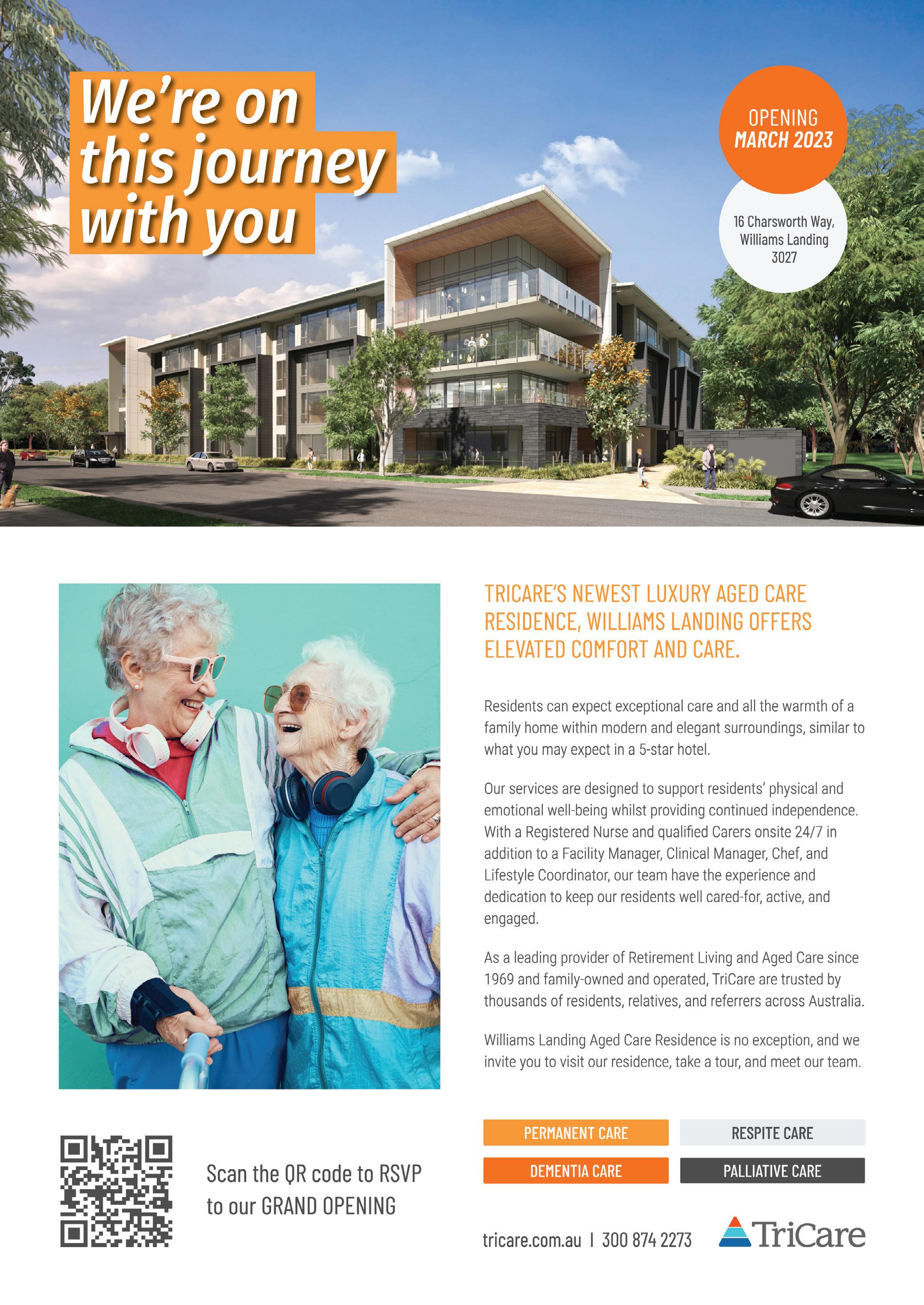
LUMARY’S REVOLUTIONARY SOFTWARE THAT ALLIED HEALTH PROFESSIONALS HAVE BEEN WAITING FOR!
Lumary launches its new all-in-one care management software, purpose-built for allied health professionals, revolutionising how providers operate, optimise and differentiate their practices.


Lumary’s latest product, Lumary AH [the newest addition to the Lumary product suite], is designed for the growing allied health professional on a mission to optimise their practice and deliver more outcome-based care. Lumary AH sets a new standard in endto-end, cloud-based software for the allied health industry. Designed with and for allied health therapists, providers can now effectively operationalise their business and support the entire client journey from start to finish.
TRANSFORMING ALLIED HEALTH ORGANISATIONS
Running an allied health practice can be a complex and challenging task. One of the biggest challenges facing providers today is managing the administrative and business aspects of their practice, while also ensuring that they are providing high-quality care to their clients.
One of the most effective ways to tackle these challenges is by using industry-specific software, tailored to the unique needs of allied health providers. This is where Lumary AH is transforming allied health.
Developed by industry experts and allied health providers, it’s an incredibly powerful tool that any practice requires. With Lumary AH, you can streamline business processes, increase efficiency, and improve outcomes for your clients. With specialised features designed with industry best-practice intelligence, allied health providers are able to work more efficiently, reduce errors, and provide quality outcome-based care.
TRUSTED BY ALLIED HEALTH PROFESSIONALS
Following suit from its sister-software Lumary CM — Australia’s leading end-to-end care management platform — Lumary AH hosts innovative features tailored to the specific
needs of allied health providers. Co-designed with allied health industry leaders, it features:
• Enhanced Waitlist Management
• Efficient Lead Capture & Enquiry
• Resource & Workflow Management
• Easy-to-use Appointment Scheduling
• Integrated Invoicing & Claiming
• Streamlined Onboarding Processes
• Smart Service Planning Tools
• Clinician-Specific Dashboards
• Advanced Client Dashboards
• Tailorable Intuitive Workflows
With an easy-to-use interface, Lumary AH helps allied health therapists, clinicians and the entire workforce to boost productivity and run more efficiently. By automating tasks such as referrals and intake, Lumary AH frees up time and resources that can be better used to deliver quality care and improve client outcomes.
Lumary AH is a valuable tool for engaging and retaining employees. With its clear goalsetting and tracking features, allied health executives can set and track progress towards specific goals, providing a sense of direction and purpose for their entire workforce.
As the Australian healthcare market sets the direction for more person-centred care, funding bodies are evolving and the demands of insurance companies are growing. Whether you’re an occupational therapist (OT) or
delivering positive behaviour support (PBS), maintaining compliance is essential. Lumary AH is designed to help providers stay on top of their obligations, which simplifies invoicing and data-management making it easier to meet financial and reporting requirements.
TAKE CONTROL OF YOUR ALLIED HEALTH PRACTICE
If you’re looking to improve business efficiency and boost productivity, investing in cloud-based, industry-specific software like Lumary AH is a smart move that will pay off in the long run.
Navigating effective care management can seem complicated and overwhelming for allied health organisations, but providers can cut through the complexities and ineffi ciencies with all-in-one allied health software. Providers who invest in purpose-built care management software are better positioned to meet the challenges of the current healthcare landscape and build sustainable businesses.
To find out more about how Lumary’s purpose-built care management software can transform your allied health practice, visit www.lumary.com/allied-health-software.
10 AGED HEALTH - FEBRUARY 2023 www.agedhealth.com.au SPONSORED CONTENT Lumary www.lumary.com
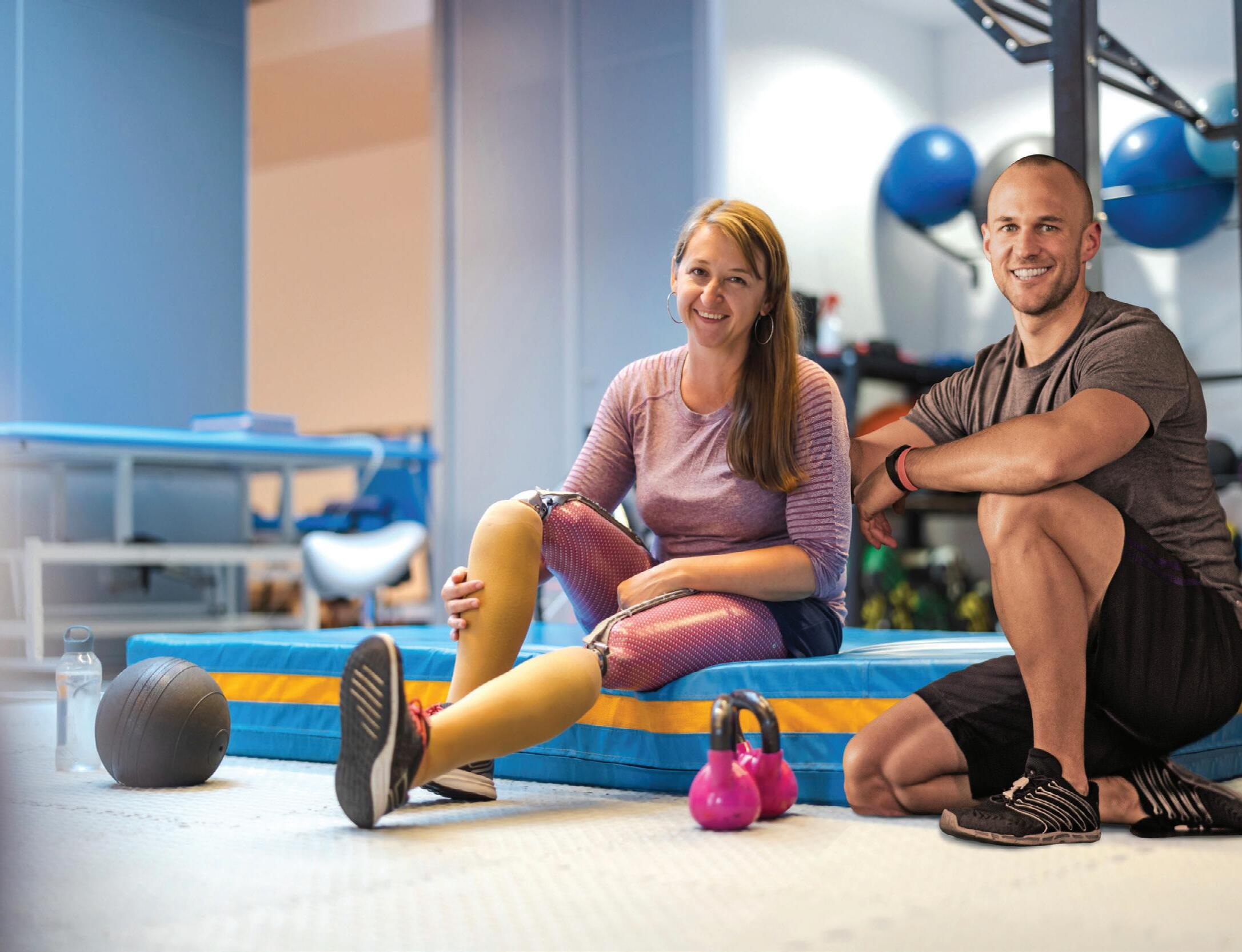

FEBRUARY 2023 - AGED HEALTH 11 www.agedhealth.com.au
NEWTON
Older Australians have a strong preference to stay in their own home should they ever have a need for care, according to the Royal Commission into Aged Care and Safety. The benefits of home comforts cannot be underestimated, but living at home does come with complications as we age. Now, CSIRO has developed a solution that could allow older Australians to realise the dream of living safely at home for longer.
The Smarter Safer Homes system consists of a digital portal and in-home sensors which provide objective information on a client’s eating habits, hygiene, mobility, sleep and social interactions to professionals, such as aged care service providers (ACSPs), so that older Australians can be supported to remain at home.

A 12-month trial of the platform, The Dementia Aged Care Services Trial, commenced in 2019 with 195 clients, aged 65 and over, from partner providers Anglicare Southern Queensland, integratedLiving Australia and All About Living. They concluded, “This technology has enabled us to actually see things that the client may not be telling us.”
All participants received either a Commonwealth Home Support Programme or a Home Care Package. Overall, for participants with Home Care Packages, the Smarter Safer Homes system greatly benefited social carerelated quality of life (10 times less ASCOT score yearly drop), thus helping them to stay independently in their own home for longer.
Motion, humidity, temperature and electrical power sensors sent data to a digital platform allowing carers to ascertain what type of behaviours were regularly occurring — such as bathroom visits, meal preparation and opening the wardrobe or front door.
A change in behaviour triggered a warning in the digital portal in the form of different coloured rays. If the client was not achieving their expected goals, a small red segment would appear in the appropriate category; a larger green ray indicated that the client was meeting or exceeding their target.
THERE’S NO PLACE LIKE HOME
12 AGED HEALTH - FEBRUARY 2023 www.agedhealth.com.au
CHARLOTTE
>>

FEBRUARY 2023 - AGED HEALTH 13 www.agedhealth.com.au iStock.com/JLcoAna Suanes
This supplementary knowledge led to more targeted support. In one case, the client wasn’t moving around as much as usual and so the platform triggered an additional care conversation. The case manager was able to specifically ask about the change in movement and discovered that the participant “didn’t feel easy on their feet at the moment”.
The case worker said, “We were able to go in and do an OT assessment and put some grab rails in and provide a wheelie walker, things like that — really quite fundamental preventative measures.”
In another case, one care service staff member said, “I noticed that somebody was up a lot during the night, so going to the toilet a lot and so we were able to talk about that, which is a conversation that these people don’t necessarily volunteer that sort of information, so he was then able to have a medical review, some medications/equipment to help with that.”
Some participants reported that visitors were worried “big brother was watching them” at first, but most said they forgot the sensors were even there.
When the sensors did record a behaviour change, this was shown on the client dashboard in one of five categories — health checks, sleep, social, walking or daily activity. This result was visible to participants, their nominated family members and the ACSP who could choose a course of action such as contacting the client or emailing the case worker.
Many new technologies come with some challenges, as the trial demonstrated: almost half of all system triggers were due to technical issues.
CSIRO scientist David Silvera said, “Some sensors ran out of battery and, due to COVID, we were not able to change the batteries for some time.
“In some cases this could have interfered with the results, as those wouldn’t have been properly monitored by all sensors.”
Although ‘action’ was taken for only 0.17% of system triggers, it resulted in 20 instances where additional support was sourced for issues that may otherwise have gone under the radar.
“There were different actions, such as a request to increase current supports to individuals. From our perspective that is a successful outcome, but we didn’t collect data past the study to know if the additional supports made a difference to the individuals,” Silvera said.
Some participants made suggestions on how to improve the technology by including an emergency trigger warning.
One service provider said that participants did think that if they had a fall, then someone would know and be able to help them — even though the system was only checked once a day for five days per week.
“I had a fall before last Christmas, and this doesn’t register. I was on the floor for about 10 minutes,” said one participant.
CSIRO plans to expand the scope of the technology by using smart analytics to provide richer information to clinicians. This would involve the use of machine learning within the algorithm to provide a prediction functionality.
Liesel Higgins, CSIRO project manager, said, “We are looking at social isolation, agitation, frailty, end-of-life care and more. We have lots of plans, some project proposals waiting for funding and many conversations with service providers, but nothing is set in stone.”

14 AGED HEALTH - FEBRUARY 2023 www.agedhealth.com.au
n
iStock.com/svetikd
IF THE CLIENT WAS NOT ACHIEVING THEIR EXPECTED GOALS, A SMALL RED SEGMENT WOULD APPEAR IN THE APPROPRIATE CATEGORY.


Your go-to company for friendly & expert advice on Aged Care, Hospital & NDIS Equipment! Individual solutions to best suit your needs! To learn more visit www.hospequip.com.au Product specialists in n Bedroom Equipment n Bathroom Support Aids n Specialist Seating n Patient Handling n Mobility & Walking Aids
DESIGN MATTERS
THE FUTURE IS INTEGRATED AND COLLABORATIVE


16 AGED HEALTH - FEBRUARY 2023 www.agedhealth.com.au
TLC Healthcare's new multigenerational healthcare precinct, which encompasses a 147-place aged care home, an early learning centre and integrated health services, in Mordialloc, Victoria.

The facility features a medical centre with allied health services, a health club with Technogym equipment and offering yoga, Pilates and group fitness classes, a 20 m warm water pool and The Village Café — supplying coffee, food and an atmospheric environment designed to bring people together.
“Our healthcare model is about providing the community with integrated healthcare services. Nowhere in Australia will you find an aged care home, medical centre, commercial health club, early learning centre and a commercial cafe in one location,” TLC Healthcare’s CEO, Lou Pascuzzi, said.

Pascuzzi also highlighted the benefit of having GPs on-site to both patients and practitioners.
“Currently, GPs and other health service providers are becoming less able to visit aged care homes because they feel Medicare benefits do not compensate for travel and time away from their practices. The opportunity costs for GPs being absent from their regular medical centre make residential aged care visits untenable.
“The TLC model provides timely availability of professional clinical care to our residents when they need it, rather than when a GP can visit, as well as minimising the use of locums.”
The early learning centre has been developed in consultation with The University of Melbourne and Griffith University to deliver an innovative intergenerational program through which the children and aged care residents will enrich each other’s lives. The centre has a capacity of 119 children aged between six months and six years.
The centre offers a holistic and inclusive approach to health and wellbeing. “For example, a parent may drop their child off at the early learning centre, then visit their Mum or Dad in our aged care home. They might then attend an appointment with their GP at our medical centre and then hit the gym for a workout or a swim, followed by a healthy smoothie or lunch at The Village Café. Importantly, they’re not travelling across town to access these exceptional services — they’re all co-located, which is incredibly convenient,” Pascuzzi said.
“Not only do we provide a great place to live and services to utilise and experience, but they’re also a great place to work. Our vision for health care is to provide a multidisciplinary platform in one place, with as many relative services available as possible, which we firmly believe delivers abundant consumer choice and a robust care continuum.” Similar developments in Ivanhoe and Hallam are in the pipeline.n
FEBRUARY 2023 - AGED HEALTH 17 www.agedhealth.com.au
L to R: Patsy Thomas (COO, TLC Aged Care), Jenny Foley (CQO, TLC Aged Care), Danusia Schmitz (Exec Mgr, TLC Primary Care), Lou Pascuzzi (CEO, TLC Healthcare), Mayor Cr Hadi Saab (Kingston Council), Jill Li (GM, TLC Aged Care Whitewater)
IMPROVING DEMENTIA CARE
Dementia Australia's Quality Dementia Care: Action Plan aims to build the capacity and capability of the aged care sector to embed and improve quality care for people living with dementia, their families and carers in Australia.
The plan is focused on initiatives that collectively will improve quality care for people living with dementia, said Dementia Australia Executive Director of Advocacy & Research Dr Kaele Stokes.
Dementia Australia is leading the plan in partnership with the Australian Government Department of Health and Aged Care, Aged Care Quality and Safety Commission, Aged Care Workforce Industry Council, Dementia Support Australia and Dementia Training Australia.
“Our extensive work and consultation with people living with dementia, their families and carers has informed the development of the Quality Dementia Care Action Plan and has been evolving since 2018,” Stokes said.
“The plan is particularly important in light of the Federal Budget announcement this week, which flags a commitment to improve safety, dignity, quality and humanity in the aged care sector. People impacted by dementia are clear about how to achieve these outcomes for dementia.
“The key focus areas of our Action Plan have been informed by consumers, as articulated in Our Solution: Quality care for people living with dementia and refined further in our Roadmap for quality dementia care.”
The initiatives focused on in the plan include:
• Dementia support pathways — People living with dementia, their families and carers have optimal access to the integrated services and supports they need to live the life they choose.

• Building workforce capability — The workforce, leadership and culture understands and supports dementia and has the skills and knowledge to sustainably embed quality dementia care.
• Dementia-friendly design — Physical environments support people living with dementia to be as independent as possible.
All of which are underpinned by people living with dementia placed firmly at the centre.
“It is the power of effective partnerships and the translation of these key themes into measurable practices that will be regularly tested with consumers and the workforce on the ground that makes this action plan truly embedded in consumer experiences of quality,” Stokes said.
Ann Pietsch, a Dementia Advocate, was diagnosed with dementia in 2012 and has been involved in developing and informing the plan.
“The plan is a great step towards achieving quality dementia care and quality aged care for people living with dementia,” Pietsch said.
“Change takes time. Activity may not immediately translate into impact. We do know that if we consistently and collectively strive toward the key focus areas, experiences of quality care will be improved over time.”
Stokes said, “People with a lived experience of dementia want to ensure that their voices are heard, that quality dementia care involves them and that their contribution leads to greater inclusion, support, respect and ultimately, improved quality of life.
“The plan will be a valuable focus during the ongoing aged care reform process and current development of the National Dementia Action Plan.
“We are developing an annual report card which will not only measure progress against the individual initiatives by each key partner, but also the impact of collective transformational change in the aged care sector.
“In the words of a person living with dementia: ‘If we can get it right for people living with dementia, we can get it right for everyone’.” n
18 AGED HEALTH - FEBRUARY 2023 www.agedhealth.com.au
iStock.com/Jovanmandic
Breathe easy
Caire provides everything you need for your oxygen therapy, from oxygen concentrators to accessories, we are dedicated to helping you breathe easy.


Freestyle Comfort
Expand your comfort zone with this innovative and powerful design:
• Compact and Lightweight
• Lasts all day
• Ergonomically Designed
• Quiet
Combining portability with clinical efficiencygiving you the freedom to travel and enjoy life on the go: Compact and transportable
Extended Battery Life
• Quiet
• 24/7 Use
NewLife Intensity 10
Stationary oxygen concentrator that’s durable with a high continuous flow:
• Higher flow options for patients in hospitals or long-term care facilities
Dual flow option allowing two patients to use simultaneously
• Easy to service and maintain
A power efficient stationary oxygen concentrator is the must have for your home oxygen delivery needs:

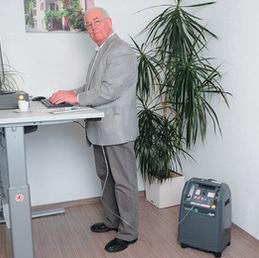

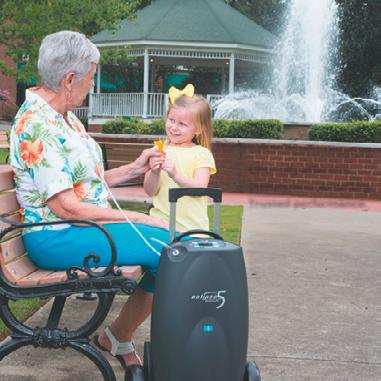
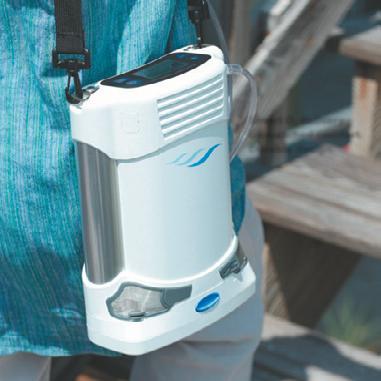
• Lightweight and easily transportable
• Low failure rate with no preventative maintenance schedule
Lockable flow meter caireaustralia.com.au
Eclipse 5
AirSep VisionAire 5
A NEW CHAPTER FOR CALVARY'S $154M AGED CARE PRECINCT
The new Calvary Bethlehem Hospital has opened its doors as part of Calvary Health Care’s $154 million health, retirement living and residential aged care precinct in Melbourne.

It marks a homecoming for the specialist 32-bed hospital and health service, a provider of palliative care services and the statewide provider of specialist care and support for Victorians living with progressive neurological conditions, such as motor neurone disease and Huntington’s disease.
The integrated Calvary Kooyong precinct brings together premium retirement living in the Hyson Apartments, contemporary residential aged care in the Huntly Suites, Calvary’s in-home care, and GP and other healthcare services, as well as Calvary Bethlehem’s services. It is designed to support residents’ changing needs and enable them to live well and in place as they age.
Calvary Kooyong General Manager Shannon Thompson said Calvary Bethlehem patients and services are the first to occupy the new precinct and will soon be followed by the first aged care residents and retirees.
The new sub-acute hospital includes outpatient clinic areas, education and training spaces, patient and family lounge and gardens, a day centre and a designated area for clinical trials.
“We are very excited to have moved back home to our original site — and into such a wonderful facility that has been designed and built to meet the needs of our patients and their families, and to support our staff to provide high-quality, compassionate care,” Thompson said.
“We have long participated in clinical trials but this is the first time that we have a designated area for that work.
“The whole facility is light and airy and offers improved and contemporary amenity for our patients, their families and for our dedicated staff. Plus having the hospital within the precinct means our specialist staff and services are there for the precinct’s residents if needed.
“Calvary has a long and proud history of providing care and health services from this site. We celebrated our 80th anniversary last year and we are very much looking forward to this exciting new chapter and the evolution of the care and services we provide to our community,” Thompson said. n
20 AGED HEALTH - FEBRUARY 2023 www.agedhealth.com.au
An aerial photo of the new Calvary Kooyong precinct with the Huntly Suites residential aged care home in the foreground, Hyson Apartments at rear and Calvary Bethlehem Hospital (rear right). Photo courtesy of Icon.
DESIGN MATTERS
Why there’s no ‘one size fits all’ solution, and how you can create a functional space that supports your facility.
Every facility is unique. Despite common standards for design inclusions and safe practice, there’s a veritable ‘laundry list’ of factors that influence how our dirty utility room (DUR) space functions each day. Everything from patient care requirements, through to your staff needs, as well as the physical layout and design of your facility.
Not only this, but with the ongoing need for vigilance regarding cross-contamination and infection prevention, the demand for a high standard in the DUR is of paramount concern to every health and aged care facility.
In short, there’s no ‘one size fits all’ approach for DUR design.
That’s why Malmet, with a long industry track record, offers custom solutions tailored to your facility size and layout, patient care needs, and your unique workflow. With a range of dedicated and dual purpose washer disinfectors, we can work with you to design a space and determine the ideal equipment for your facility’s DUR.
Want flexibility?
The option of a selection of two or more dedicated washer disinfectors allows greater flexibility for your workflow.
The ES-D washer disinfector provides a dedicated option for decontaminating bedpans and urine bottles. If utensils processing is required, the ES-D can be paired together with either a top or front loading utensil washer
LOOKING FOR DIRTY UTILITY ROOM SOLUTIONS?
Renelle Harrison
disinfector to ensure dedicated options are available for a variety of reusable devices, with each machine offering programme options specific to the items your staff use everyday.
With dedicated machines, your facility can take advantage of optimised processing speeds, as well as the flexibility of specialised machines adding functionality between wards or work spaces.
If your facility is looking for dedicated processing and flexibility across workspaces or wards, a unique combination of washer disinfectors may be an ideal option.

Want to maximise space?
Not every facility has the luxury of additional space in the DUR, so if you’re looking to maximise limited available space, the dual purpose WDS series washer disinfector is a potential solution. As a large capacity machine, your DUR throughput capacity will also be increased — so your facility can keep up with the demands of a busy patient load.
The WDS is equipped with unique programmes to cater for bedpans, urine bottles or utensils. Device-specific programmes cater for each category of item, which ensures that ward equipment is processed according to its type. Simply choose the appropriate cycle for the items inside (i.e. bedpans and bottles, utensils) and these will be processed accordingly. And with the added benefi t of the self-decontamination function, you can be assured that the machine will be cleaned internally as items inside are processed — a reassuring standard for all Malmet washer disinfectors.
For the facility that is looking for efficiency, increased throughput capacity and optimised DUR space, the WDS is an effective dual purpose machine.
Self-decontamination for infection prevention:
We understand that infection prevention is essential to every facility’s operations, which is why we design with your needs in mind. Every Malmet washer disinfector is designed to provide high level disinfection that ensures compliance with the relevant requirements in the National Safety and Quality Health Service (NSQHS) Standard for Preventing and Controlling Healthcare-Acquired Infection. Malmet washer disinfectors not only clean and disinfect the reusable devices placed inside, you can also rest assured that our washer disinfectors will perform a selfdecontamination on every cycle. So whatever machine configuration you choose, there is no risk of cross-contamination between devices, with clean machines every cycle.
A solution for every setting
We’ve walked countless hospital and healthcare hallways over our 50+ years in business, so whatever your DUR needs, we can bring experienced, creative ideas that support the highest quality patient care in your setting.
For more information: https://www.malmet. com.au/washer-disinfectors.

FEBRUARY 2023 - AGED HEALTH 21 www.agedhealth.com.au SPONSORED CONTENT Malmet www.malmet.com.au
MOBILITY DEVICE SUPPORTS AT-HOME HEALTHCARE WORKERS
A pneumatic patient transfer device, called AirLift, provides a safe way for individual healthcare workers to reposition patients.
Developed by RMIT University students Fergus Davidson, Maireid Carrigg and Maneet Singh, the device that assists at-home care workers, has bagged this year’s National James Dyson Award.
“A spike in demand for at-home care, alongside an under-resourced and rapidly aging workforce is making community healthcare work increasingly dangerous. The design came to us during a camping trip when inflating a dry bag. Realising the potential, we modified an inflatable lounge so that it could comfortably reposition a human, which served as our initial proof of concept,”
Fergus Davidson said.
Once tucked under the patient, AirLift can be inflated using a remote-control pump, which fills the inner bladder with air and lifts the patient off the bed.

Placing a layer of air between the patient and the bed reduces the force required for repositions, minimising the risk of injury to the healthcare worker from strain.
AirLift can switch between three key patient movements — sit up, roll over and translate — which can be controlled using the remote control. A removable cover can be replaced to meet hygiene requirements.
As winners of the award, the AirLift inventors secure AU$9000 in funding to take the idea to the next stage of its development. The team plan to manufacture a functional prototype, as well as assessing and improving the sustainability of the design.
Davidson said, “We see the James Dyson Award as a huge opportunity for emerging designers and engineers. It gives the next generation a platform to showcase our enterprise and creativity. We are honoured to be recognised in this year’s awards.”
The national winners were chosen by an external panel in collaboration with a Dyson engineer. The judges gathered to review the entries submitted from university students and graduates across the country,
22 AGED HEALTH - FEBRUARY 2023 www.agedhealth.com.au
before selecting the Australian winner and two runners up.
Becki Penfold, Design Manager – Hair Care and National James Dyson Award 2022 judge said, “The James Dyson Award aims to ignite young people’s interest in design and engineering, challenging them to not only think about solutions to real and relevant problems but to pursue them. Every year we receive incredible and creative entries that have the potential to solve national and local issues. This year’s Australian entries were no different. AirLift is a creative solution to a problem of increasing importance, and I look forward to seeing how the product develops.”
This year, entries in Australia were judged by: Councillor HY William Chan, Young Australian Designer of the Year 2021 — Good Design Awards, Forbes 30 Under 30 Architect and Urban Innovator and Councillor at the City of Sydney; Lachlan Bradford and Robbie Hicks, Funny Business podcast hosts; and Ryan Tilley, 2019 James Dyson Award Australian National Winner and Founder of Gecko Traxx.
Chan said, “It’s inspiring to see fellow young Australian designers and engineers shaping meaningful solutions to act on their vision for a better world. The winners of this year’s James Dyson Awards have showcased the power of empathetic and dignified design in responding to the needs of key workers in our local community, particularly in health and aged care.”
Runners up in this year’s competition were Wound, a non-invasive Vagus Nerve Stimulation device that helps stop internal bleeding, and Frankie Chair, a functional mobility chair.
Wound
Developed by Kathy Ky, University of New South Wales, Wound is designed for emergency trauma, to help rapidly stop uncontrollable bleeding until the patient arrives at the hospital. Through electrical nerve stimulation, the device sends a signal to the Vagus Nerve between 1–5 times per second. Upon stimulation, the spleen will rapidly increase the production of blood clotting factors at the site of injury, forming a natural ‘plug’ that stops bleeding in under a minute.
Frankie Chair
Invented by Carla Pelligra, Swinburne University of Technology, Frankie Chair aids with key mobility challenges and includes a pressure sensor which can alert the carer if the individual has left the chair, helping to monitor wandering in those who have dementia. Additionally, the chair incorporates a tilt mechanism, allowing the base to tilt to a 20-degree incline to help users go from sitting to standing. The chair can adjust to the needs of the user (eg, lengthening or shortening the legs). n
SIMPLER – ONE STEP CLEAN AND DISINFECT
A cleaner disinfectant reducing the need for multiple products.
SMARTER – SUPERIOR EFFICACY
Killing up to 99.9999% of pathogens including bacteria, viruses, mould, fungi, yeast, TB and Spores.

FAST KILL TIMES WITH NO WET CONTACT TIME REQUIRED
Begins to work from 30 seconds and keeps on working to achieve all kill times even when dry.
SAFER – MATERIAL COMPATIBILITY
Tested and proven compatible with a vast range of surfaces with no heavy detergent residues.

RESIDUAL AND BIOSTATIC CAPABILITIES
With 24-hour residual on touched surfaces for bacteria, COVID-19, and yeast and a further 72-hour biostatic effectiveness on bacteria and COVID-19.
S-7XTRA IS AVAILABLE IN UNSCENTED AND NEW S-7XTRA FRESH – GINGER & GREEN TEA
FEBRUARY 2023 - AGED HEALTH 23 www.agedhealth.com.au
Pty Ltd More Healthcare facilities, Aged Care and Patient Transport are choosing S-7XTRA
invite you to request more information and receive your FREE sample. PROUDLY MADE IN AUSTRALIA 1300 936 044 | info@anaeron.com.au | www.anaeron.com.au ARTG 232011 ARTG 232014
We
Hand sanitiser and moisturiser
Modern healthcare workers understand that regular hand hygiene has never been so important. Increased hygiene frequency can cause dry, cracked skin which compromises skin integrity.
Bactol Sanitisers can help alleviate this problem in two ways. Firstly, by delivering the right type and amount of cleaning agent for each hand hygiene application. Secondly, every Bactol product is enhanced with emollients that help keep skin soft, smooth and healthy.
The Bactol range of products is fully Australian made; the result of decades of research and development, including extensive feedback from healthcare workers and facilities.
The Bactol range includes Bactol Clear, Bactol Blue, Bactol 2% CHG and Bactol Moisturiser.

Whiteley www.whiteley.com.au
Disinfectant cleaners
The S-7XTRA FRESH is a disinfectant cleaner developed with industry feedback, specifically with the needs of the aged care industry in mind.

The products kill 52+ pathogens including bacteria, viruses such as COVID-19 and norovirus, mould, fungi, yeast, TB and spores such as C. diff
Available in 5 L concentrate and 5 L ready to use, S-7XTRA FRESH provides a long-lasting ginger and green tea fragrance to provide the feeling of calm, revitalisation and wellness.
S-7XTRA is proven to offer a 24-hour residual on touched surfaces for pathogens such as bacteria, COVID-19 and yeast, and a further 72-hour biostatic protection for bacteria and COVID-19.
The product has been tested and shown to be compatible with an extensive range of materials including rubber, metals, glass, painted and varnished surfaces. It is also used in heritage conservation on delicate and priceless objects. S-7XTRA offers a full range of products in concentrate, ready to use and wipes.
Listed on the Australian Therapeutic Goods (ARTG) 232011 and 232014, the products are non-flammable, do not contain chlorine and begin to work from 30 s with no need for wet contact times.
Anaeron Pty Ltd
www.anaeron.com.au
TV remote
TV remote controls have become ubiquitous all over the world and an essential part of an entertainment experience for most people at home and on the road. Since the first TV remotes were introduced in the 50s, both consumer and commercial markets have been saturated with many design and technology options for TV remotes.
However, the American Society for Microbiology (ScienceDaily, 17 June 2012) identified the TV remote as one of the most contaminated objects in a hospitality environment. Later more studies were conducted and identified harmful bacteria and viruses lingering on TV remotes. This poses a challenge for modern hospitals and aged care facilities expected to provide a range of information, signage and entertainment services to patients, residents and visitors.
The hospital TV remote must meet modern hospital requirements and be constructed in a way that presents a flat non-porous surface with tactile bumps instead of traditional buttons.

CombiTel provides a range of stylish remote controls that are compatible with all leading TV brands such as Samsung, LG, Philips, Sony and others. Omniscreen remotes are easy to use and can be cleaned to hospital specifications. Their durable case includes a lockable battery compartment and provision for a security cord. CombiTel
www.combitel.com.au
24 AGED HEALTH - FEBRUARY 2023 www.agedhealth.com.au
Syringe pump
The BD BodyGuard T syringe pump is the next generation of T34 'NIKI' Syringe Driver, offering a compact design that is safe and easy to use. The small, lightweight ambulatory infusion pump offers flexibility to aid in patient comfort, workflow efficiency and patient safety.
REM SYSTEMS offers a comprehensive aged care portfolio in line with palliative care guidelines.
Medication management solutions for the administration of injectable drugs including the BD BodyGuard T ambulatory pump, infusion disposables and a comprehensive array of accessories and services such as training, e-learning, service and repair are available.
REM SYSTEMS provides for all infusion needs, such as CE-999-103BDEN — BD BodyGuard T; CE-100-174S — BGT Locked Box; CE-100-176S — BGT Carry Pouch; TP-FG00106 — BGT Subcutaneous Starter Kit; WA-10006622 — 9 V 6LR61 Battery and ME-BC576 — Codan Ext Set 0.35 mL prime, 152 cm.
REM SYSTEMS’ team of trained professionals offer device user training and a dedicated customer support team.
REM SYSTEMS has a comprehensive service capability to support the healthcare industry with a nationwide technical service team for the repair, service and calibration of devices.
REM SYSTEMS
www.remsystems.com.au
Bathroom solutions
Galvin’s simple and smart bathroom solutions for temperature monitoring, usage and safety have been developed with comfort, care and convenience in mind. They help increase autonomy and dignity for older people without compromising safety and functionality.

The grab rails and accessories are architecturally inspired and the tapware features touch-free sensors. The modern, stylish single-lever mixer ranges include coloured oversized directional temperature indicators. Galvin Engineering Pty Ltd www.galvinengineering.com.au
Stocking removal device
The Doff N’Donner (DND) from SIGVARIS Group is a donning and removal device for medical compression stockings.



The Doff N’Donner Set comprises a very soft device that allows the user to quickly and painlessly slide compression stockings over an arm or a leg. The included cone simplifies the rolling of a compression stocking onto the DND. With the aid of the cone, the medical compression stockings can also be easily unrolled from the DND. The cone features a suction cup built into the base so that it attaches well to a flat surface.
The device makes the donning and removal of compression stockings easy and therefore promotes treatment compliance.
Less physical effort is required to put on and remove stockings with the device and it allows compression stockings to slide painlessly over wounds, scars and delicate skin.
The DND set is durable and suitable for use by the wearer themselves, as well as caregivers. Calf- and thigh-length stockings with or without grip top in all sizes and compression classes as well as open or closed toe can be used with the DND set.
It’s also suitable for different leg shapes, may extend the life of compression stockings and can also be used for arm sleeves.
Garnet Medical
www.garnetmedical.com.au
FEBRUARY 2023 - AGED HEALTH 25 www.agedhealth.com.au
THE ROLE OF TECHNOLOGY IN COMPLIANCE MANAGEMENT
MICHAEL IVANCHENKO*
Reports of abuse, neglect and substandard care have plagued Australia’s aged care system, and knowing providers are meeting regulations and standards that are in place to protect some of our most vulnerable has never been more important.
In 2021, the Royal Commission into Aged Care found, “the aged care system is well behind other sectors in the use and application of technology”, and undoubtedly modernising compliance systems through digital transformation will lead to much-needed improvement in the sector.
Aged care workforce compliance is becoming increasingly complex as legislators move to improve standards of quality, safety and care through further regulation.
Digital transformation throughout Australia’s aged care industry can help create outcomes that connect, automate and modernise the system.
Organisations that are still attempting to manage compliance through spreadsheets or a paper-based approach face an impossible task.
Challenges with spreadsheets include a higher risk of human error in data entry, standalone systems that don’t integrate with each other, no centralised source of data, a lack of transparency, and an inability to automate time-consuming manual processes.
Digital technologies can help find efficiencies or deficiencies and generate data for decision-making. These include things like screening of staff, certification checks, safety inductions, workforce management, communication and care applications.

Getting rid of tedious tasks and freeing staff up to do work they deem important enables the care of our most vulnerable to be a provider’s primary focus.
A provider needs to regularly assess, monitor and review its workforce through an effective human resources system — which includes compliance management — and using spreadsheets is not the answer!
Benefits of digital transformation include:
• Efficiency: Possible improvements include automated alerts and renewals, automated document collection, employee self-service portals, fast onboarding and pre-boarding leading to reduced time-
26 AGED HEALTH - FEBRUARY 2023 www.agedhealth.com.au
iStock.com/Ridofranz
to-start, portable credentials between jobs to reduce duplication, and the ability to view workers’ compliance status at a glance.
• Data quality: Repetitive data entry makes people susceptible to mistakes, which can be costly to rectify. Shifting to a digital system with automated data collection will reduce errors, improve the quality of data, and (importantly) enables the leadership team to make confident decisions based on correct underlying data.
• Automation: Automated notifications prompt aged care staff to complete compliance tasks in a self-service portal, reducing the burden on HR in terms of onboarding, inductions, and document collection.
• Scalability: Digital platforms can easily scale from a single team to thousands of workers across different aged care facilities.
• Transparency: Using a digital platform takes data out of silos such as spreadsheets and emails and brings them into a centralised, accessible system. It prevents compliance breaches and creates an audit trail that is invaluable when investigating incidents and accidents.
• Analytics: Digital platforms can generate custom reports for data-driven insights that would have taken several days of work
Independence with Style Simple and Smart Solutions for Care
using spreadsheets. Analytics enables data visualisation that can help users spot trends at a glance, see areas of risk, and spot data anomalies that may have been hard to see in a lengthy spreadsheet. Data analytics enables better quality decisions, optimises aged care performance, drives continuous improvement, reduces risk, and offers new opportunities.
• Integration: Tech-savvy aged care organisations use a sophisticated technology stack approach to HR management comprising several systems to streamline, optimise and support HR functions across recruitment, engagement, collaboration and performance. Data must flow seamlessly between the different components of the tech stack, which is where an API comes in. Good digital platforms have a ‘Checks as a service API’ ready-built for integration with off-the-shelf and bespoke HRIS (Human Resources Information System) platforms.
• Security: Although spreadsheets have some security features such as password protection and cell locking, they do not have the security and data protection needed to protect sensitive information including workforce compliance data. Security and data protection tools must protect your business and its information. Privacy and security must be guaranteed by complying with Australian Privacy legislation and GDPR and be ISO 27001 certified for peace of mind. The best way aged care providers can feel more assured they truly ‘know their people’ is to sign up to an online platform allowing for realtime compliance monitoring of employees. n
Developed with comfort, care and convenience in mind, our care products help increase autonomy and dignity without compromising safety and functionality:
•architecturally inspired grab rails and accessories
•modern, stylish single lever mixer ranges with coloured oversized directional temperature indicators

•touch-free sensor tapware
• smart solutions for temperature monitoring, usage and safety


To learn about our full room solutions of Galvin® and HEWI assisted living products, visit galvinengineering.com.au

FEBRUARY 2023 - AGED HEALTH 27 www.agedhealth.com.au
*Michael Ivanchenko is the CEO of CVCheck, an ASX-listed company offering screening and verification services to a wide range of industries including aged care, mining and resources, oil and gas, recruitment, banking, financial services, health and education.
IMPROVING FOOD STANDARDS: 10 POINTS TO CONSIDER
The dining experience alongside the obvious benefits of good nutrition are important to the health and wellbeing of older Australians, although poor experiences are purportedly common in long-term aged care facilities.

The Royal Commission into Aged Care Quality and Safety
Final Report released in 2021 identified food and nutrition as a priority area of attention. This recommendation led to a basic daily fee supplement of an additional $10 per day per resident from the Australian Government since 1 July 2021. This has since been replaced by the AN-ACC funding model which became operational on 1 October 2022.
Aged care facilities have already been innovative in their attempts to improve food quality and standards, and now a new discussion paper from the Aged Care Quality and Safety Commission offers new points of focus for further improvement.
1. IMPROVED MEAL CHOICE AND QUALITY
Appetite is clearly linked to the enjoyment and consumption of foods so menus should focus on promoting appetite by maximising flavours and aromas. Choice, including food choice, is fundamental to the Aged Care Quality Standards.
Food presentation is also a key component of high-quality food service and food must be nutritious, familiar, culturally appropriate, well presented and part of a positive mealtime experience.
Regular and formalised collection and review of individual preferences should be undertaken to support satisfaction.
2. ALTERNATIVE FOOD SERVICE DELIVERY MODELS AND INNOVATION
To promote food intake, as well as resident satisfaction, alternative models of food service delivery could be considered.
Dining experiences that reflect a ‘normal’ home life in some way can provide comfort and familiarity. Residents should be enabled to make their meal choice at the point of service, or as close as possible, rather than ordering prior to mealtimes.
Innovative methods, such as assisted buffets, carts and room service, are potential options.
Residents could be involved in weekly menu design, shopping and meal preparation.
3. EVIDENCE-BASED MENU PLANNING AND ASSESSMENT
Meal planning should be based on meeting the specific nutrition and dietary needs of older adults.
Where not in place at present it is recommended that dietitians and speech pathologists regularly review menu options to ensure these align with older adult dietary requirements and special chewing or swallowing considerations.
28 AGED HEALTH - FEBRUARY 2023 www.agedhealth.com.au
4. ROUTINE MALNUTRITION SCREENING
Older people are at increased risk of unplanned weight loss and malnutrition. Multiple validated nutrition screening tools are available to determine the nutritional status of adults within aged care settings. This can be enhanced with a multidisciplinary team.
5. SUPPORT FOR INDEPENDENT FOOD AND DRINK CONSUMPTION
Accessibility of food may be further promoted through the provision of assistive mealtime eating and drinking utensils and placing food within sight and reach of the resident to encourage autonomy.
6. FOOD DELIVERY, TIMING AND TEMPERATURE MANAGEMENT
Food service timing and delivery should be considered to better accommodate resident needs and staff availability. This could include greater flexibility of mealtimes to enable increased time with each resident as necessary.
The temperature of meals can be monitored through the use of appropriate food utensils and consideration of the distance from the kitchen to the resident.
7. ONGOING QUALITY REVIEW AND CONSUMER FEEDBACK MECHANISMS
Obtaining more detailed feedback from residents can help food service managers in identifying specific aspects of the food or service that are causing dissatisfaction.
Results of quality evaluation surveys should be used to benchmark and focus the food service’s strategies to enhance quality performance and customer satisfaction.
Surveys, comment cards, and personal interviews are some suggested methods to obtain valuable feedback about the food and service quality from residents.
8. 24-HOUR
DINING AND ACCESS TO FLUIDS
Services to ensure snacks such as fruit or other nutritious food items are available throughout the day and between meals for residents as appropriate. These may include yoghurt tubs, custard pots, cheese and crackers.

To prevent dehydration, ready access to water and other fluids for all residents is critical.
9. DINING ROOM AMBIENCE
A ‘homelike’ dining environment can improve resident enjoyment of mealtimes and contribute to a sense of comfort and familiarity.
Dining room environmental changes can include appropriate lighting, comfortable furniture, or playing music during mealtimes. Dining rooms, including furniture, equipment, crockery and utensils require regular review for cleanliness and hygienic practices associated with meal service.
10. INCREASED EMPHASIS ON ORAL HEALTH
Greater emphasis to be placed on ensuring oral hygiene, including frequent brushing of teeth and daily denture cleaning, to prevent issues with eating for residents. This may also entail seeking necessary care to respond to other issues affecting food and liquid intake such as dry mouth or ill-fitting dentures.
The establishment of a multidisciplinary team with members of the dental profession, speech pathologists and dietitians may contribute to the management the oral health, swallowing and hydration of aged care residents. n
FEBRUARY 2023 - AGED HEALTH 29 www.agedhealth.com.au
iStock.com/Cecilie_Arcurs
NUTRITIONALLY BALANCED MEALS FOR HEALTHY SENIORS
With over 235 meals developed by dietitians and prepared by chefs, Lite n’ Easy offers a delicious, food-fi rst approach to promoting independence, choice & health for older Australians.
Lite n’ Easy are best known for its weight loss and healthy convenience products but has become an established, trusted supplier of meals to older Australians, with a delivery network that covers more than 95% of the metro, regional and rural population.

Lite n’ Easy prepares and delivers over 10 million healthy meals each year to more than 15,000 older Australians who qualify for the federally funded Commonwealth Home Support Programme (CHSP) or Home Care Package (HCP). This makes Lite n’ Easy one of the largest meal providers nationwide for older Australians.
In direct response to the issue of smaller appetites and malnutrition risk in older Australians, My Choice by Lite n’ Easy was launched in 2020. Produced by Lite n’ Easy’s team of Accredited Practising Dietitians and chefs in conjunction with the Australian Dietary Guidelines and the Meals on Wheels National Meal Guidelines, the My Choice range of energy and protein dense meals, soups and desserts were designed specifically to assist in preventing malnutrition and unintentional weight loss in older Australians.
These are some of the reasons why Lite n’ Easy been voted No.1 in Canstar Blue’s ‘Healthy Meal Delivery’ services three years in a row, winning in 2020, 2021 and 2022.
Lite n’ Easy partners with many Home Care Package providers across Australia, so that seniors can have access to even more affordable healthy, delicious meals. If eligible, HCP recipients could save 70% of the cost of their meals.


Lite n’ Easy’s service is flexible with no lock-in contracts or subscriptions, so customers are free to order week-to-week as needed.
In addition to supporting HCP providers and recipients, Lite n’ Easy is now also supporting the broader Aged Care sector by providing meals in bulk to respite centres, residential aged care facilities, hospitals and many other organisations looking for alternative healthy meal solutions for their employees and residents.
For an effective and affordable meal solution to suit your business needs, please email Lite n’ Easy at: agedcare@liteneasy.com.au. Visit https://www.liteneasy.com.au/my-choice or call 13 15 12 for more information.
30 AGED HEALTH - FEBRUARY 2023 www.agedhealth.com.au SPONSORED CONTENT Lite n' Easy www.liteneasy.com.au




DEFYING AGEISM

32 AGED HEALTH - FEBRUARY 2023 www.agedhealth.com.au
Recognising unconscious biases about aging and focusing on the positives and opportunities of aging were the central themes at the New/Old: Designing to Defy Ageism panel discussion held recently at the University of Melbourne-led innovation precinct Melbourne Connect.
Aged care leaders and senior design, research and advocacy professionals explored ways to challenge ageism through co-designing for inclusivity, personal agency and intergenerational connection.
“Public discussions about innovation rarely include seniors,” said host James Kelly, Partner and head of Seniors Living & Care at ClarkeHopkinsClarke (CHC) Architects. Kelly — an advocate for the design and delivery of truly integrated communities for Australia’s growing senior population — focuses the practice’s attention on research and best practice in a sector that has changed rapidly in recent years.
The wide-ranging panel discussion about the drivers, impacts and antidotes to ageism also drew on the expertise of David Wright-Howie, policy researcher at COTA Australia (Council on the Ageing); Dr Kaele Stokes, Executive Director of Advocacy and Research at Dementia Australia; Natasha Wilkinson, CEO of Donwood Community Aged Care; and Professor Pazit Levinger, Principal Researcher and exercise physiologist at the National Ageing Research Institute (NARI).
“There’s increasing awareness both in government and the sector that services should be planned and developed with, not just for, older people, and that their lived experience really matters to achieve the best outcome,” Wright-Howie said.
“So what does this mean for the physical design and cultural environment of our care services and our public spaces?”
CULTURAL CHANGE NEEDED
Stokes described misunderstandings about dementia and the isolation and lack of consultation that can result for many of the nearly 500,000 Australians living with the condition.
“Often people with dementia aren’t asked what they want or what they think because there’s an assumption they don’t have the capacity to be able to engage,” she said.
“That’s absolutely not the case. We have a vibrant community of advocates living with dementia around the country who participate in all sorts of activities for our organisation as advocates for systemic change. They have opinions, ideas and inspiration we can all draw from. I think that’s a key cultural change that as a community we need to make. It’s something we do need to think about when we’re designing spaces, communities, policies and programs too,” Stokes said.
“Given that in residential care more than two-thirds of people are living with moderate-to-severe cognitive impairment and ... about 70% of people living with dementia are out in the community, they can’t just be corralled off into a separate sphere. They’re part of our communities.”
THE ROLE OF INTEGRATION
Wilkinson agreed and said many of the 75,000 Victorians living in residential aged care are also underestimated.
“But the aged care industry is definitely changing and seeing these opportunities,” she said.
“Many aged care homes have integration with preschools and secondary schools, and bring residents out to other communities like universities … to have talks. That brings so much purpose and experience out into our workforce, our younger generations … from a group of people who have time, purpose and experience, and still want to give to their community.”
Levinger said in her work creating indoor training facilities and outdoor exercise parks to help seniors maintain their health, wellbeing and social connections, enlisting older advocates is central to success.
“We’ve found when there’s a choice, an older champion has more impact than a younger trainer because people can relate to them,” she said.
“Getting them involved in decisions ... they have so much wisdom and a lot of experience, which should be encouraged and listened to,” Levinger said.
MEANINGFUL CO-DESIGN
According to James Kelly, great examples of intergenerational living, common in Europe and emerging in Australia, are a product of meaningful co-design.
Architects who don’t listen deeply to residents miss valuable opportunities to design more interesting, adaptable, diverse communities that promote resident choice and agency, Kelly said.
“There can be an assumption that as designers we need to remove sensory stimulus for people with dementia, but that’s not the case, and it can result in spaces that potentially offer nothing to anyone.”
His team applies urban design thinking to link seniors’ communities with their broader neighbourhoods through shared facilities from cafes to paths and parks that maintain connections between locals of all ages. “It’s about providing accommodation for people to get the care they need locally and allowing them to stay connected with the community they’ve always had a presence in.”
FEBRUARY 2023 - AGED HEALTH 33 www.agedhealth.com.au
n iStockphoto.com/wagnerokasaki
SERVICE MATCHES VOLUNTEERS WITH RESEARCH PROJECTS
From quick surveys to drug trials and everything in between, a new service helps researchers recruit into studies and helps volunteers access tailored opportunities that interest them, providing a chance to ‘give back’.
StepUp for Ageing Research, the University of Sydney's online matching service connects interested volunteers with research projects being run across Australia.

Australia’s rapidly ageing population can’t be ignored and research is the key to improving quality of life, and the quality of aged and dementia care services, said Professor Yun-Hee Jeon, Susan and Isaac Wakil Professor of Healthy Ageing at the University of Sydney and Director of StepUp for Ageing Research. “By 2060, around one-fifth of Australia’s population will be 65 or over,” said Jeon.
“For Australia to cater to this shift we need better services, better treatments and the facilities and infrastructure to support people to age well — especially for the majority of Australians who would like to stay in their homes.”
StepUp for Ageing Research builds on the successful StepUp for Dementia Research* launched in 2019. The service has enlisted close to 1700 volunteers, 26 universities and institutes, 220 researchers and successfully fed participants into over 50 completed research projects, with another 50 studies currently recruiting through the service.
StepUp ambassador Dame Quentin Bryce AD CVO said active engagement of older people and their families in research is essential to keep them front and centre in health policy development and service delivery.
Healthy ageing is about older people becoming and remaining healthy. StepUp for Ageing Research will enable the voices of older people, families and communities to be heard and to be included,” she said.
But unfortunately, research is costly and one of the significant costs is recruitment. Numerous research studies in ageing encounter problems because they can’t get the required number of participants to sign on, and stay on.
One large multinational Alzheimer’s trial predicted a recruitment period of 18 months but took three years to finalise recruitment.
“These recruitment delays are not only costly, they also slow the pace at which discoveries and better ways of doing things can be implemented,” Jeon said.
Dementia, aged care and ageing-related research is a particularly difficult area to recruit for as many older people often keep to themselves or can be difficult to reach.
34 AGED HEALTH - FEBRUARY 2023 www.agedhealth.com.au
iStock.com/Laurence Dutton
“But on the flip side many people who are ageing often want to give back and make a meaningful contribution to society — they just don’t know where to start. StepUp for Ageing Research aims to bridge this gap and make it easy for the public to connect with researchers,” Jeon commented.
The platform was developed in collaboration with the UK’s Join Dementia Research team at University College London and University of Exeter, and technology partner Thoughtworks Australia, with initial funding from the Australian Government.
Who is StepUp for Ageing Research for?
Anyone 18 years and over who resides in Australia can register to be involved online, via phone or post. The service is looking to recruit all adults, including the young, older people, those with dementia or cognitive decline, family, friends and carers. Being able to speak English is not a requirement and many studies use translators as research needs to represent all cultures and ethnic backgrounds.
How does it work?
Once you have registered your details at StepUp for Ageing Research, the service checks to see
if you match any studies. If so, it will send you detailed information on the study and you then decide if you’d like to take part. By registering for the service you are not committing to research projects. A note on privacy: Protecting people’s data and privacy is a priority for StepUp for Research. The platform complies with the University of Sydney’s cybersecurity policies and ethics protocols. What people are saying
Bobby Redman, who lives with dementia, said she loves being involved with StepUp for Research as it allows her to be involved with research that could help her remain functioning and potentially even one day find a cure for dementia.
“It gives me purpose and makes me feel that I can make a difference,” Bobby said.
“So far, I have been linked to more than a dozen research projects covering many different perspectives including activities to reduce the risk of further cognitive decline, rehabilitation, impact on social skills and the use of technology.
“It is so easy to connect to researchers through StepUp — once registered on the website, emails come through to tell me that I have been matched and I then have the option of deciding whether I want to be involved. There is no pressure, just great opportunities.” n
*StepUp for Dementia Research was initially supported by funding from the Australian Government Department of Health under the Dementia and Aged Care Services Fund. Development of StepUp for Ageing Research was supported by Thoughtworks Australia and Calvary.
IMPROVING EFFICIENCIES WITH TECHNOLOGY
CASE STUDY
With increasing wait times and growing demand, allied health providers are being urged to adopt technology solutions to improve efficiencies within their business. For speech pathology and occupational health services firm Peninsula Speech Plus, the search for a solution could help to achieve that wasn't easy.
We wanted a system that was easy to use and held all our data in one place, said Megan Ingram, Owner and Director of Peninsula Speech.
“We looked at other software solutions in the market, and Lumary AH was the only one that met our needs. The efficiency gains enabled by prepopulating important information across business areas is a real win for us,” Ingram said. Lumary’s Lumary AH is a care management software designed specifically for allied health providers, with intelligent features developed to address these issues.
Features around waitlist management and intelligent appointment booking mean more people that require care are attended to more efficiently. Other features and benefits include: invoicing and claiming — invoice with HICAPS and compliantly claim from the NDIS and Medicare; reports and dashboards — track performance and make informed decisions about an entire practice; goal and outcome tracking — set client goals and share meaningful insights about care outcomes; automated referral and intake — streamline referral and intake process through intelligent task automation.
“As a business owner, I wanted to easily see the reporting and data that helps me make important planning decisions that ultimately benefit the community we serve,” Ingram explained.
Lumary AH has been developed with the needs of allied health providers at its core, said Claire Whitelaw-Brown, Director Allied Health and Aged Care, Lumary. We worked closely with an advisory board of experienced allied health professionals to ensure that Lumary AH meets the unique needs of this sector, Whitelaw-Brown said.

FEBRUARY 2023 - AGED HEALTH 35 www.agedhealth.com.au
SELECTING AN AIR PURIFIER FOR USE IN AGED CARE FACILITIES

Air filtration has become a key line of defence in providing airborne control of SARS-CoV-2 in healthcare.
Many aged care facilities and hospitals across Australia have invested in air purifiers to reduce the airborne spread of the virus.
The science is clear when it comes to purifying the air. A German study at Goethe University in Frankfurt found in a room with all the doors and windows closed, air purifiers reduced the number of aerosol particles present by 90% in less than 30 minutes.
Speaking with Nicholas Kraus, the Managing Director of INOVA Air Purifiers, an Australian air purifier manufacturer on the Central Coast of NSW, we asked what’s important when selecting an air purifier in healthcare facilities?
What type of air purifiers should be used?
When selecting an air purifier in commercial environments including resident and staff areas, it’s important to get a system that includes an H13 medical-grade HEPA fi lter, is designed to run 24/7, and is engineered for commercial environments.
This is where the filter is made from paper with airtight seals. HEPA paper is used in medical applications because it guarantees the same high effi ciency for the life of the filter which is typically up to 3 years.
Synthetic filters commonly found in the majority of consumer brand home air purifiers only last around 6 months before the efficiency of the filter starts to reduce. These types of air purifiers are better suited to dust & allergen removal rather than filtering viruses.
Where should air purifiers be operated?
Resident rooms, common areas and staff rooms. They are designed to operate 24/7 and portability is key to allow for systems to be quickly mobilised to where they are needed most e.g. where an outbreak is located.
Are air purifiers suited to daily surface disinfection?
Important consideration should be given to the construction materials of an air purifi er. Not only should the air purifier be compatible with ethanol-based alcohol disinfectants, but
the exterior casing should also avoid crevices around the air intakes and discharge vents that could harbour viruses, and bacteria making the system difficult to disinfect.
Why choose InovaAir?
INOVA air purifi ers only use medical-grade HEPA filters, providing up to 3 years between changes and guaranteed effi ciency for the life of the filter. Unlike some of the cheaper plastic alternatives, INOVA uses powdercoated aluminium construction making them well suited to commercial environments where disinfection is regularly required.
INOVA® is proudly Australian-made and owned on the Central Coast of NSW for over 20 years.
For further information visit www.airclean. com.au or call 1300 137 244.

36 AGED HEALTH - FEBRUARY 2023 www.agedhealth.com.au SPONSORED CONTENT
INOVA Air Purifiers www.inovaairpurifiers.com.au
TECHNOLOGY-
HOME CARE ENABLED
MANSI GANDHI
Older Australians’ preference to age in place has been long known. Latest data from the Australian Institute of Health and Welfare’s GEN makes that evident, showing how the use of home care services has tripled in Australia.
In the 10 years to June 2020, the number of people using home care increased by a massive 199% to 142,436 people. In the same period, the number of people using permanent residential aged care increased by 13%, from 162,578 people to 183,989 people, according to GEN Aged Care Data.
As the demand for aged and home care services continues to increase, the sector faces many challenges, including staffing challenges, funding, regulatory changes and more. In the face of these challenges, the use of digital technologies to deliver care can transform the aged care sector and improve the experiences of older Australians receiving care in the home.
A new project — Implementing Technology-Supported Home-Based Care for Older Australians — by the National Ageing Research Institute (NARI) and home care provider Silverchain hopes to innovate home care delivery and support advancement of in-home care.
The project received $150,000 from the Aged Care Research & Industry Innovation Australia (ARIIA) as a part of the ARIIA Grant program, focused on supporting projects in areas of urgent and critical need.
Project lead NARI Associate Professor Frances Batchelor said integrating technology into the delivery of home care will help alleviate strain on the aged care workforce.
NARI and Silverchain are jointly exploring “the role of technology in supporting home care service provision. Our aim is to develop a technology implementation framework that will enable aged care providers to determine how best to introduce digital technology into the home care sector so that it benefits those receiving home care as well as the home care service providers,” Batchelor said.

FEBRUARY 2023 - AGED HEALTH 37 www.agedhealth.com.au
>>
iStockphoto.com/Giuseppe Lombardo
A MULTIDISCIPLINARY FOCUS
“New thinking and solutions are required to bolster our aged care system. By adopting multidisciplinary methods for providing care, we can improve staff capacity and capability.
“Our team consists of researchers and industry representatives from a range of backgrounds such as physiotherapy, psychology, public health, aged care leadership, frontline staff as well as experts in technology and aging. Importantly, we also have a consumer representative on our project team, someone with lived experience of receiving home care.
“Having a multidisciplinary focus will enable us to consider implementation of technology from all perspectives and adopt a strengthsbased approach to improving staff capacity and capability. For example, we will explore the ways in which aged care workers already use technology successfully and their attitudes to adopting new technologies.
“This means we are always finding new ways to create more efficient and sustainable methods of care. With robust strategies and supports for those delivering care, and a multidisciplinary lens, strain on individual carers can be reduced.”
Batchelor acknowledged that technology isn’t a one-stop solution for stressors on the aged care system. “But it can be an incredibly valuable tool for carers when combined with traditional approaches,” she said.

Digitally enabled care can offer a range of benefits to both providers and consumers, including: efficiency improvements, enhanced care prioritisation, good care-coordination, reduced waiting time for services and improved communication.
INTEGRATING TECHNOLOGIES INTO ROUTINE CARE

Silverchain Director of Research Discovery
Professor Tanya Davison said that the use of technology to complement traditional faceto-face approaches offers enormous benefits to both home care providers and their clients.
“This will provide older Australians with greater flexibility and choice, and transform the client experience,” Davison said.
“Many technologies are readily available. This research will help the aged care sector to understand how to effectively implement technologies into routine care.
Silverchain’s dedicated community aged care teams will participate in the project, with researchers drawing expertise from the experience, education, skills and knowledge of our frontline workforce, Davison said.
Using co-design methods, NARI and Silverchain will identify the technological capacity of the aged care workforce to integrate technology into the care they provide in the home.
“Thank you to ARIIA for funding this important work, and supporting this new and significant partnership between NARI and Silverchain to deliver the best quality care to older Australians,” said Batchelor, who is also working on programs to prevent falls in older Australians.
“Falls actually account for more injury-related deaths and hospitalisations than other types of accidents; for example, road trauma. Of course, this means that the more we are able to prevent falls, the less strain there is on the health system, and the better the outcomes are for older people.” They are a major problem for older people, with approximately one-third of older people aged 65 and older falling in any given year.
“My work has focused on those at high risk of falls, such as those with stroke or dementia, as well as those with mild balance problems; for example, active older people who might have some concerns about their balance. Our research is practical in that we aim to implement and evaluate falls prevention programs, particularly focused on exercise, to achieve reductions in falls and injury. In the next 12 to 24 months we would like commence trials in residential aged care and hospitals, which are both high-risk settings,” Batchelor said. n
38 AGED HEALTH - FEBRUARY 2023 www.agedhealth.com.au
iStock.com/Geber86
HAVING A MULTIDISCIPLINARY FOCUS WILL ENABLE US TO CONSIDER IMPLEMENTATION OF TECHNOLOGY FROM ALL PERSPECTIVES AND ADOPT A STRENGTHS-BASED APPROACH TO IMPROVING STAFF CAPACITY AND CAPABILITY.






1 2 3
A DAY IN THE LIFE
Images:


40 AGED HEALTH - FEBRUARY 2023 www.agedhealth.com.au
...
Supplied
BRETT ENGLART
BRETT ENGLART, LIVING SUPPORT MANAGER AT ST VINCENT'S CARE CARSELDINE
THE POWER OF PUTTING PEOPLE FIRST
Each resident at St Vincent’s facilities is a unique individual who requires personalised and custom care that fits their needs and wants.
The saying “No two days are the same” is evidently true for anyone who works in aged care. Each day provides a different opportunity to provide person-centred care to the lovely seniors who reside in our homes.
Describing a typical day is tricky, and while the day-to-day running might be different each and every day, the purpose and goals stay the same — to create a safe and happy environment for the residents and staff. My role as Living Support Manager focuses on the non-clinical aspect of residential care: the lifestyle and enjoyment they want to carry into their later years.
A MORNING TO PLAN AND EVALUATE
The morning usually starts with a Clinical Hub meeting to discuss any residents’ and/or staffing needs. The managers across the site join forces to provide a clear representation of our service delivery, with each manager taking control of their teams’ responsibilities and objectives to ensure clean, smooth running throughout the week.
Depending on the day and the current intake of new volunteers, Partners in Care and university student placements, conducting orientation and site tours plays a role in my morning routine. This ensures that everyone working across the facility has the right information and tools to help provide effective and supportive care.
Following any manager meetings, we provide our staff the opportunity to come to collective and collaboratively work out their goals, purposes and struggles. Each day across the facility, I facilitate two team huddles. Here we bring together employees across all services to encourage discussion and feedback on how we can collectively work together to achieve any obstacles that we might encounter. This initiative has provided a safe place for our staff to open up about issues they may be facing and receive support and assistance from their co-workers and managers.
NEW RESIDENT, NEW RELATIONSHIP
Each of our residents is viewed and treated as a unique individual. During their admission process, we ensure that we have the right information to adequately care for their needs and wants. I, along with the Admission Coordinator and Clinical Manager, engage with the new resident and their loved ones to discuss both the clinical and non-clinical aspects of the care plan.
The meeting provides an opportunity to articulate our commitment to support the residents with a holistic approach that supports their individual goals and choices. I like to get to the nitty-gritty that helps the resident with a smooth transition into their new home. We explore preferred mealtimes, hobbies and interests, their personal religious preferences and more. It allows the loved ones to feel comfortable and confident with their decision to help transfer their parent, grandparent or loved one into residential aged care.
Admission is only the beginning of the relationship with our residents. Every Friday, I run household (what we refer to our sections/hubs as) meetings. This is the perfect time for our residents to express their feedback and concerns in a supportive and friendly environment. This also provides residents with the opportunity to further explore their needs and wants and make requests for changes in mealtime, activities and more. With eight households across the home, we aim to deliver household meetings every four weeks.
A PERSON-CENTRED APPROACH
While my day may change greatly throughout the week, there is one thing that always remains the same, the work completed is based on the motto ‘People first, task secondary’.
The connection shared between employees and residents, or employees and outside community is what allows the aged care environment to flourish. Our goal as a community is to establish aged care as a personcentred approach with the resident at the heart of all we do. n
FEBRUARY 2023 - AGED HEALTH 41 www.agedhealth.com.au
HORTICULTURE THERAPY TO IMPROVE OUTCOMES

CONNECT. SEARCH AGEDHEALTH
PRINT / DIGITAL / MOBILE VISIT WWW.AGEDHEALTH.COM.AU
Editor: Mansi Gandhi ah@wfmedia.com.au
Editorial Assistant: Charlotte Newton
Publishing Director/MD: Geoff Hird
Art Director/Production Manager: Julie Wright
Art/Production: Linda Klobusiak, Marija Tutkovska
Circulation: Dianna Alberry, circulation@wfmedia.com.au
Copy Control: Mitchie Mullins copy@wfmedia.com.au
Advertising Manager: Kerrie Robinson +61 400 886 311 krobinson@wfmedia.com.au
Bolton Clarke has recognised outstanding gardens from across the group’s Allity residential homes as part of its newly launched gardening competition.
Group Lifestyle Services Manager Catherine Doyle said The Best in Grow Resident Gardening Competition had created a real buzz across the homes. The competition saw 43 homes working to create a fresh and vibrant gardening masterpiece.
Bayside Aged Care home secured the dementia-specific category with its sensory garden, while Claremont Terrace was awarded the general category with a variety of fruit, vegetables and flowers.
“Horticultural therapy is so beneficial for residents and they’ve been able to get involved in lots of different ways, from planning and planting their gardens to weeding, watering and watching their gardens grow,” Doyle said.

“The gardens have also given residents a real sense of accomplishment and will be used for lots of activities into the future.
Claremont Terrace resident Valarie Johnson said the experience was so enjoyable that she didn’t miss a single session to help get the gardens prepared for judging.
“It was a great way to meet and socialise with other residents in our home,” Johnson said.
“It has brought a lot of memories back for me of my gardening days as I did my own landscaping whenever I built a home.
“It has been amazing being in a group of creative, positive and likeminded people and I am now growing radish on my own balcony!” she said.
Doyle said the competition has been a great success and residents are already planning their next project. n
Advertising Sales: Nikki Edwards +61 431 107 407 nedwards@wfmedia.com.au
PUBLISHED BY Westwick-Farrow Media
A.B.N. 22 152 305 336 www.wfmedia.com.au
Head Office Unit 7, 6-8 Byfield Street, North Ryde Locked Bag 2226 North Ryde BC NSW 1670 AUSTRALIA ph: +61 2 9168 2500
If you have any queries regarding our privacy policy please email privacy@wfmedia.com.au
Subscriptions for unregistered readersprice on application
Printed and bound by Dynamite Printing Print Post Approved PP100029283 ISSN 2653-4770
NOTICE: All material published in this magazine is published in good faith and every care is taken to accurately relay information provided to us. Readers are advised by the publishers to ensure that all necessary safety devices and precautions are installed and safe working procedures adopted before the use of any equipment found or purchased through the information we provide. Further, all performance criteria was provided by the representative company concerned and any dispute should be referred to them. Information indicating that products are made in Australia or New Zealand is supplied by the source company. Westwick-Farrow Pty Ltd does not quantify the amount of local content or the accuracy of the statement made by the source.
42 AGED HEALTH - FEBRUARY 2023 www.agedhealth.com.au
YEARS CELEBRATING











www.WFMedia.com.au/subscribe FREE to industry and business professionals The magazine you are reading is just one of 11 published by Westwick-Farrow Media. To receive your free subscription (magazine and eNewsletter), visit the link below.
Scan


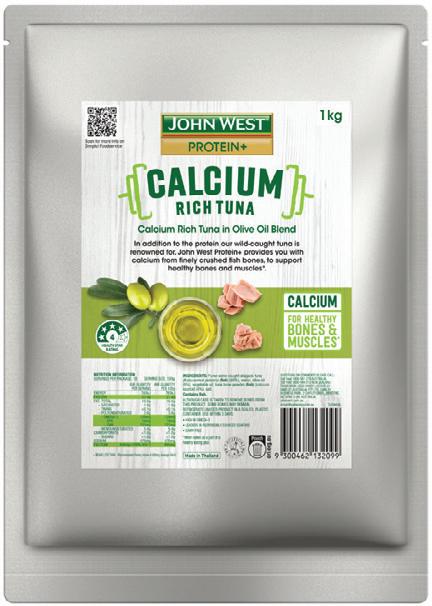


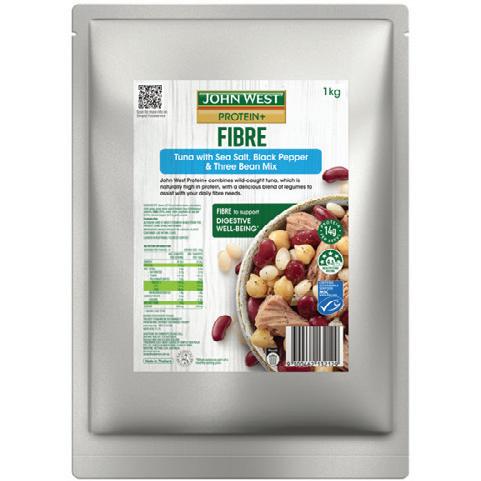

simplotfoodservice.com.au VIC / TAS (03) 9588 3200 NSW / ACT (02) 9741 2800 QLD (07) 3902 7000 SA / NT (08) 8422 2017 WA (03) 9588 3711
OUT THESE 4 NEW PRODUCTS:
West Protein+ Calcium Rich Tuna in Springwater
West Protein+ Calcium Rich Tuna
Olive Oil
CHECK
• John
• John
in
• John West Protein+ Omega 3: Tuna with Capsicum, Sweetcorn, Chilli & Red Kidney Bean Mix
• John West Protein+ Fibre: Tuna with Sea Salt, Black Pepper & Three Bean Mix for more information




 Brett Englart Living Support Manager St Vincent’s Care Carseldine
Michael Ivanchenko CEO CVCheck
Brett Englart Living Support Manager St Vincent’s Care Carseldine
Michael Ivanchenko CEO CVCheck
 Amy Sarcevic Contributing Editor Hospital + Healthcare
Amy Sarcevic Contributing Editor Hospital + Healthcare




















































































































